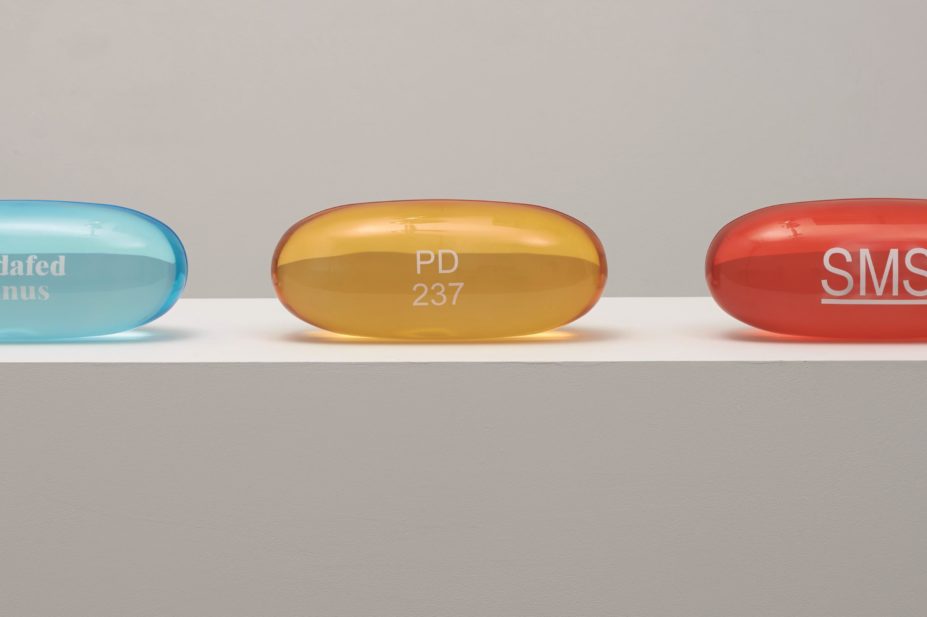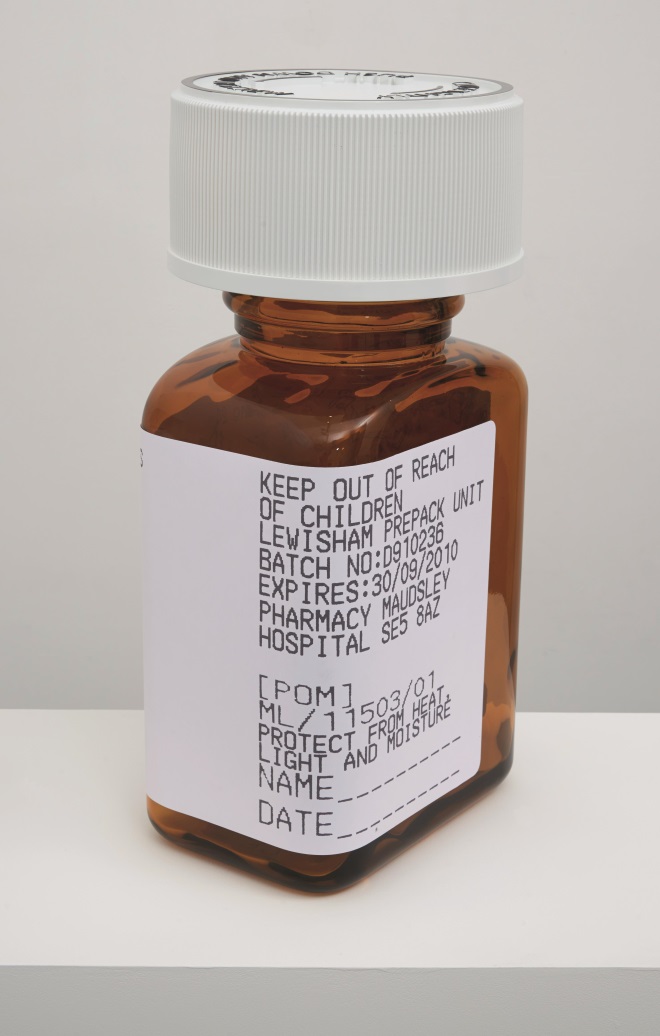
If you happen to visit the British Museum before 15 November 2014, you may wish to pop across the road to the Paul Stolper Gallery for a quick look at a small exhibition of new pharmacy-based works by Damien Hirst. But I wouldn’t recommend a special journey unless you are a gullible art collector.
Hirst is well known for an obsession with pharmacy and pharmaceuticals, and he has now found a new way to exploit this theme. Most of the works on show are polyester resin sculptures (or “sculptural editions”) in the form of greatly enlarged representations of pharmaceutical dosage forms or packaging.

Chlordiazepoxide exhibit
Chlordiazepoxide exhibit
It seems that the exhibits have been made by Hirst’s minions, but the addition of his signature means that art dealers and collectors will buy them for inflated prices. For example, if you wish to acquire a 28.5cm sculpture of a 100mg Viagra tablet (available in a limited edition of 30), you will have to fork out £4,000, while a 140cm-tall sculpture of a 150ml Ventolin Syrup bottle costs no less than £30,000, as does a 200ml Tegretol Syrup carton of a similar size.
Also in the exhibition is a set of 30 Warhol-esque prints depicting a 30mg morphine sulphate immediate release (MSIR) capsule bearing the identification marks of the US company Purdue Frederick. But while the PF product is a subdued purple and grey, Hirst’s prints are in 30 different garish colour combinations. Offered in a limited edition of 15, the prints cost £4,200 unframed.
Just as brassy is the three-metre neon sign spelling out the exhibition’s pretentious title, “Schizophrenogenesis”, with each letter glowing in a different colour. The sign can be yours, as one of an edition of three, for £96,000.
Hirst is one of the loose group of visual artists who in the 1990s became known as YBAs (Young British Artists). I enjoy the work of many YBAs – Jake and Dinos Chapman, Chris Ofili, Rachel Whiteread, Gavin Turk and others – but I have never been able to appreciate Hirst. Critics say that much of his output is inspired by other people’s innovations rather than being truly original. For example, in 1989 he started producing cabinets of medicine bottles, later developing the concept into a room-sized installation called “Pharmacy” – but this was nearly 50 years after the US artist Joseph Cornell had first exhibited a bottle-filled cabinet entitled “Pharmacy”.
Hirst has often been accused of plagiarism, and in 2000 he paid an undisclosed sum to avoid legal action for breach of copyright over a large bronze sculpture that imitated the design of a Humbrol toy. How do the pharmaceutical companies represented in this exhibition feel about the exploitation of their own original designs?
You may also be interested in
The importance of diverse clinical imagery within health education

Government should consider ways to prevent ‘inappropriate overseas prescribing’ of hormone drugs, review recommends
